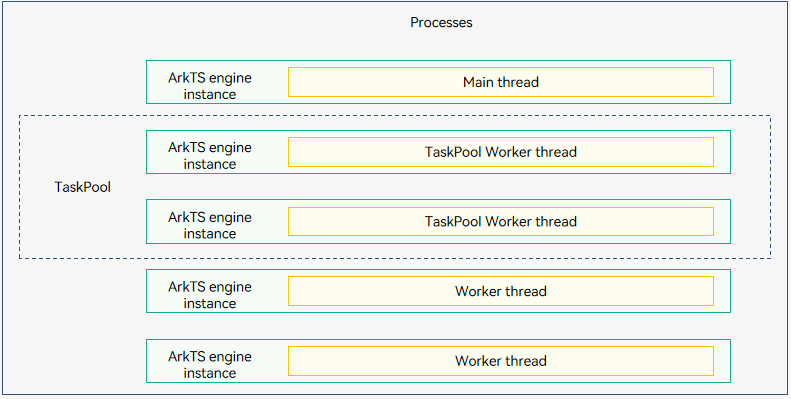Thread Model (Stage Model)
Thread Type
There are three types of threads in the stage model:
-
Main thread
- Draws the UI.
- Manages the ArkTS engine instance of the main thread so that multiple UIAbility components can run on it.
- Manages ArkTS engine instances of other threads, for example, using TaskPool to create or cancel tasks, and starting and terminating Worker threads.
- Distributes interaction events.
- Processes application code callbacks (event processing and lifecycle management).
- Receives messages sent by the TaskPool and Worker threads.
-
Used for time-consuming operations and provides APIs for setting the scheduling priority and load balancing. It is recommended.
-
Used for time-consuming operations and supports inter-thread communication. For details about the operation mechanism, communication method, and usage of TaskPool and Worker, see Comparison Between TaskPool and Worker.

NOTE
- TaskPool manages the number of threads that can be created and their lifecycle. A maximum of eight Worker threads can be created, and you need to manage their lifecycle.
- Multiple components can exist in the same thread. For example, both UIAbility and UI components exist in the main thread. In the stage model, EventHub is used for data communication.
- To view thread information about an application process, run the hdc shell command to enter the shell CLI of the device, and then run the ps -p <pid> -T command, where <pid> indicates the process ID of the application.
Using EventHub for Intra-Thread Communication
EventHub provides APIs for sending and processing events in threads, including subscribing to, unsubscribing from, and triggering events. Using EventHub for Data Synchronization describes the development procedure by using data synchronization between the UIAbility component and the UI as an example.